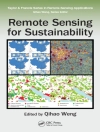This book offers an essential introduction to the phenomenon of shrinking cities in China, highlighting several case studies, qualitative and quantitative methods, and planning responses. As an emerging topic in urbanizing China, cities experiencing population loss have begun attracting increasing attention. All chapters of the book were contributed by leading researchers on the subject in China. Richly illustrated with photographs for a better visual understanding of the topic, the book will benefit a broad readership, ranging from researchers and students of urban planning, urban geography, urban economics, urban sociology and urban design, to practitioners in the areas of urban planning and design.
Tabella dei contenuti
Part 1: The overall picture of shrinking cities in China Shrinking cities in China: the overall profile and paradox in planning Part 2: Looking into shrinking cities from regional perspective A multi-scaled analysis of the shrinking population in a region with out-migration: A case study of Hunan Province.- Urban shrinkage in the Beijing-Tianjin-Hebei Region and Yangtze River Delta: Pattern, trajectory and factors.- Research on spatial distribution and influencing factors of shrinking cities in Jilin Province.- Space-time Analysis and Factors Attribution of Urban Shrinkage in Northeast China.- Recognition, analysis and corresponding strategies for shrinking cities in Northeast China Part 3: Case study.- Shrinking cities’ depopulation process and spatial pattern: A transnational comparison between Yichun, Heilongjiang, China and Youngstown Metropolitan Area, US.- Analysis on variation of quality of street space in shrinking cities based on dynamic street view pictures recognition: A case study of Qiqihar.- Measuring growth and shrinkage in a rapidly urbanized area: the case of Dongguan
Part 4: Appendix
Appendix 1 – Freezing land
Appendix 2 – Urban shrinkage in China: A look at three Northeast China cities
Appendix 3 – While we are talking about urban expansion and economy growth, have you noticed the phenomenon of shrinking cities?
Appendix 4 – Learning about Northeast China from the close-up view of Shiling Town
Circa l’autore
Ying Long is now an associate professor in the School of Architecture, Tsinghua University, China. His research focuses on urban planning, quantitative urban studies and applied urban modeling. He has an education background in both environmental engineering and city planning. Before joining Tsinghua University, he has worked for Beijing Institute of City Planning as a senior planner for eleven years. Familiar with planning practices in China and versed in international literature, Dr. Long’s academic studies creatively integrate international methods and experiences with local planning practices. He has published over one hundred journal papers and led over twenty research/planning projects. Dr. Long is also the founder of Beijing City Lab (BCL www.beijingcitylab.com), an open research network for quantitative urban studies.
Shuqi Gao is a lecturer in the School of Architecture at Southeast University in Nanjing, Jiangsu, China, specializing in the fields of shrinking cities, physical disorder, aging society and urban redevelopment. He graduated from the Tsinghua University with a doctoral degree on urban planning. From 2016 to 2017, he was a visiting doctoral student at Massachusetts Institute of Technology’s Department of Urban Studies and Planning, where he delved into the research of corresponding strategies for shrinking cities in the US. He has published several papers that related to the topic of shrinking cities on top planning journals in China. He has attended seminars on the issue of shrinking cities in various places, including University of Tokyo and Massachusetts Institute of Technology.












